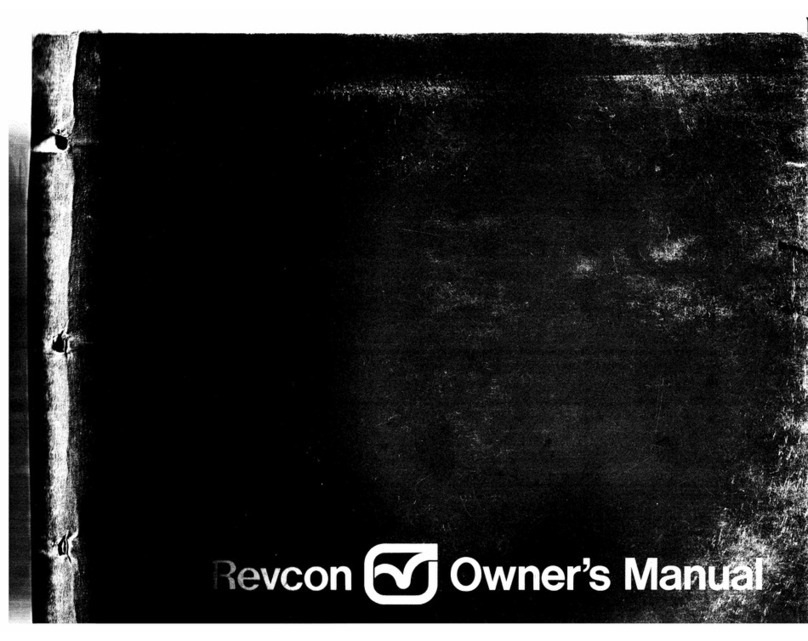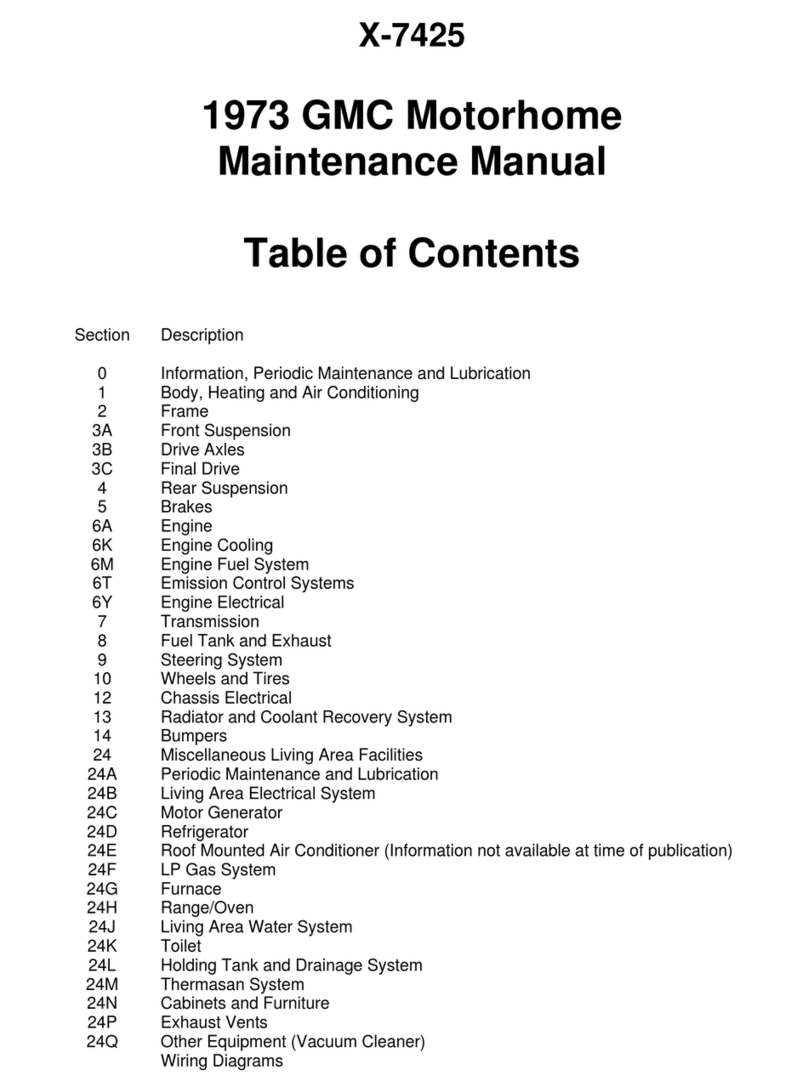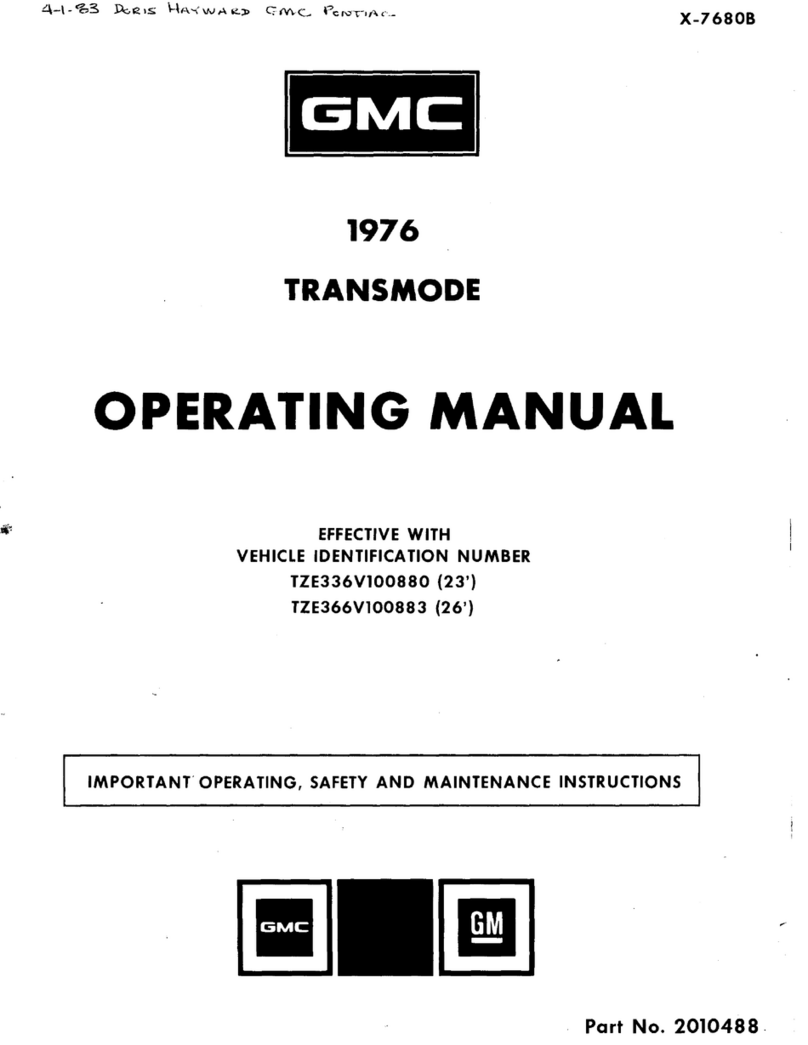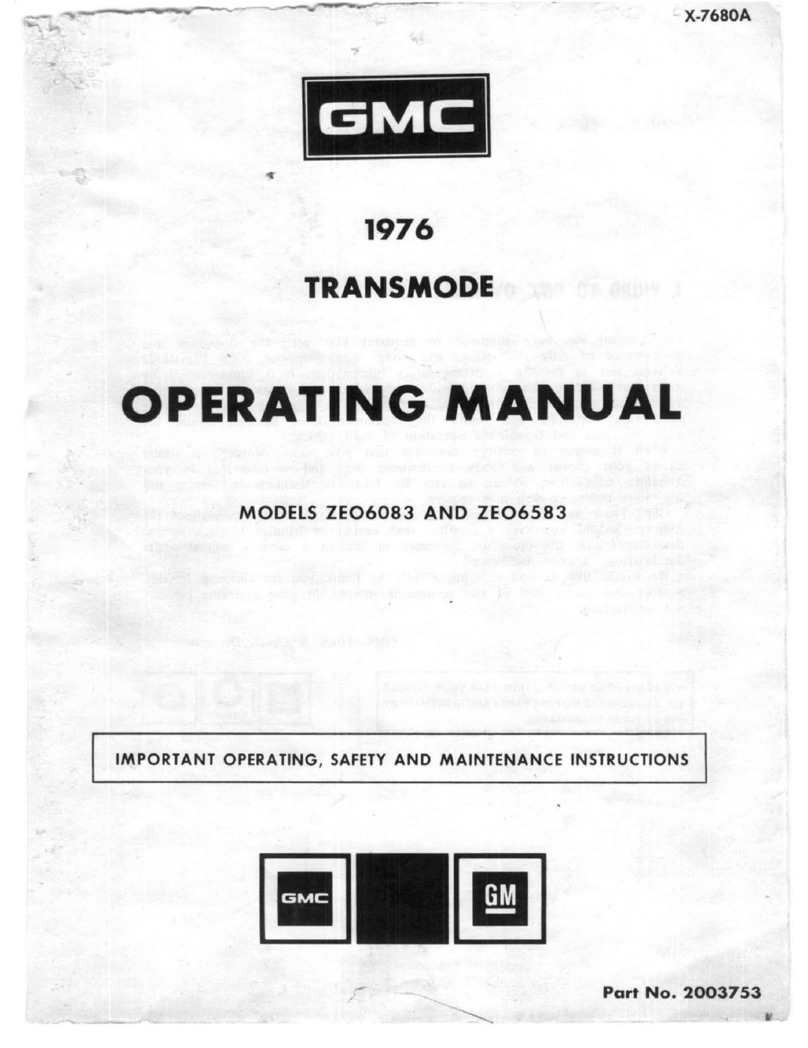TABLE
OF
CONTENTS
SUBJECT
PAGE
NO.
Water
Heater
. . . . . . . . . . . . . . . . . .
39
Kitchen
Facilities
. . . . . . . . . . . . . . . . .
40
All-Electric
Refrigerator
. . . . . . . . . .
40
Kitchen
Range
J
Oven
. . . . . . . . . . . .
41
Kitchen
Sink
and
Faucet
. . . . . . . . . .
44
Water
Purifier
. . . . . . . . . . . . . . . . . .
45
Bathroom
Facilities
. . . . . . . . . . . . . . . .
45
Standard
Toilet
. . . . . . . . . . . . . . . . .
45
Recirculating
Toilet.
. . . . . . . . . . . . .
46
Bathroom
sink
and
Shower
Control
Valve
. . . . . . . . . . 47
Shower
Head
..
.
...........
·. . . .
48
Bathroom
Warm
Air
Duct
. . . . . . . . .
49
Bathroom
Exhaust
Fan
. . . . . . . . . . .
49
Venti~tion
. . . . . . . . . . . . . . . . . . . . . .
49
Windows
............
.
.........
49
Ceiling
Vents
..................
50
Roof
-
Mounted
Air
Conditioner
. . . . . . .
50
Furnace
........................
51
Furniture
. . . . . . . . . . . . . . . . . . . . . . .
54
In
Case
of
Emergency
. . . . . . . . . . . . . . . . .
59
Four-Way
Hazard
Warning
Flasher
....
59
Emergency
Starting
...............
59
Jump
Starting
. . . . . . . . . . . . . . . . . . . .
59
Engine
Coolant
Caution
. . . . . . . . . . . .
61
Jack
Usage
Instructions
. . . . . . . . . . . . .
61
Towing
................
.
........
63
Freeing
Vehicle
From
Sand,
Etc.
. . . . . .
64
Emergency
Exit
. . . . . . . . . . . . . . . . . .
64
Fire
Extinguisher
. . . . . . . . . . . . . . . . .
64
Appearance
Care
. . . . . . . . . . . . . . . . . . . .
65
Care
and
Cleaning
of
Interior
. . . . . . . .
65
General
Information
. . . . . . . . . . . . .
65
iii
SUBJECT
PAGE
NO.
Lap
B
elt
Care
. . . . . . . . . . . . . . . . . .
65
Interior
Glass
. . . . . . . . . . . . . . . . . .
65
Kitchen
Sink
. . . . . . . . . . . . . . . . . . 67
Vacuum
Cleaner
. . . . . . . . . . . . . . . . 67
Dr
apery
Care
. . . . . . . . . . . . . . . . . . 67
Cleaning
Fabrics
. . . . . . . . . . . . . . . .
67
Cleaning
Fabrics
(With
Cleaning
Fluids)
. . . . . . . . . . . . . .
68
Cleaning
Fabrics
(With
Detergent
Foam
Cleaner)
. . . . . . .
68
Rem
oval
of
Specific
Stains
. . . . . . . .
68
Exterior
Appearance
Care
. . . . . . . . . . .
69
Bright
Metal
Parts
. . . . . . . . . . . . . .
69
Exterior
Glass
. . . . . . . . . . . . . . . . . .
69
Polishin
g
and
Waxing
..........
..
69
Touch-Up
Paint
...
.
............
70
Undercoating
. . . . . . . . . . . . . . . . . .
70
Service
and
Maintenance
. . . . . . . . . . . . . . 71
Maintenance
Schedule
. . . . . . . . . . . . .
71
Accessibility . . . . . . . . . . . . . . . . . . . . . 72
Exterior
Compartments
. . . . . . . . . . .
72
Engine
Accessibility . . . . . . . . . . . . .
72
Engine
Compartment
Light
. . . . . . . . 74
Hoisting
Instructions
. . . . . . . . . . . . . . . 74
Lubrication
Details
. . . . . . . . . . . . . . . . 75
Engine
. . . . . . . . . . . . . . . . . . . . . . .
75
Transmission
..................
77
Final
Drive
. . . . . . . . . . . . . . . . . . . .
78
Steering
System
. . . . . . . . . . . . . . . . 78
Brake
System
..................
79
Servicing
Details
. . . . . . . . . . . . . . . . . .
79









































